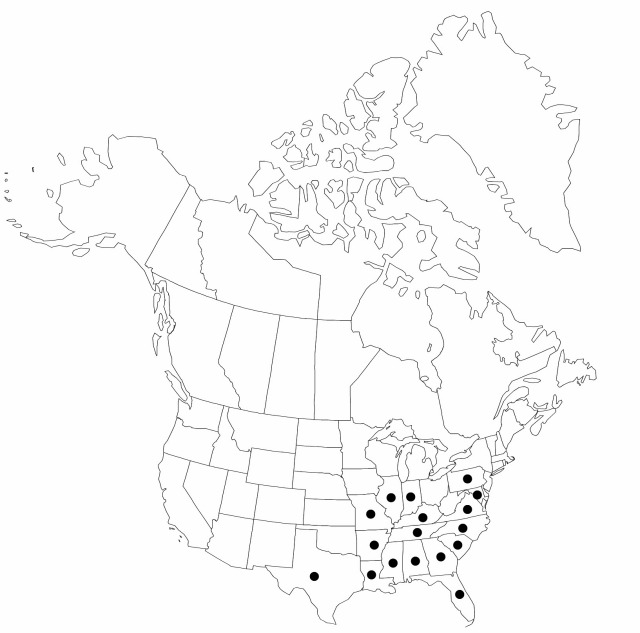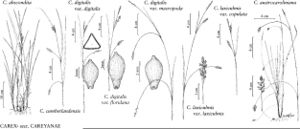Carex digitalis var. macropoda
Rhodora 40: 400, plate 511, figs. 3, 4. 1938.
Revision as of 20:11, 16 December 2019 by FNA>Volume Importer
Widest leaf 2–2.9(–3.5) mm wide. Inflorescence: longest peduncle of staminate spike (6.3–)8.1–15.9 cm; terminal spike usually surpassing bract blade of distal lateral spike. Perigynia 7–10-veined, 2–3.4 mm, apex barely excurved.
Phenology: Fruiting spring.
Habitat: Mesic to dry-mesic, deciduous or mixed deciduous-evergreen forests, mixed soils
Elevation: 0–400 m
Distribution

Ala., Ark., Fla., Ga., Ill., Ind., Ky., La., Md., Miss., Mo., N.C., Pa., S.C., Tenn., Tex., Va.
Discussion
Selected References
None.
Lower Taxa
None.
